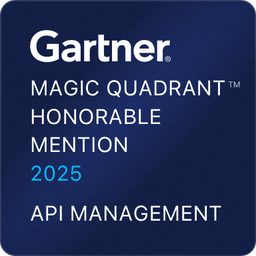Run APIs and AI Where the Internet Can’t Go
Air-gapped API and AI Runtime Platform with Policy-as-Code and Zero-Egress Ops
TRAEFIK LABS IS TRUSTED BY LEADING ENTERPRISES WORLDWIDE
















































Why Zero-Egress Matters Now
Sovereign and mission-critical programs now require fully isolated compute environments that run without public internet, scale from single‑rack cells to region‑level footprints, and keep operations inside a customer‑controlled jurisdiction. Connectivity is limited to trusted networks and time‑to‑field matters.
Your API and AI layers need to mirror these constraints—without relying on an external SaaS control plane.

Key Challenges of Legacy Solutions
Traditional API management lags behind the rapid evolution of cloud-native and Kubernetes-native technologies, creating gaps in security, compliance, and operational efficiency that limit organizations' ability to innovate and scale.
External Connection Required
When data planes and/or control planes operate in the cloud, air-gapped API management simply isn’t possible without extensive customization and unscalable work arounds.
All-or-Nothing Governance
Legacy solutions cannot provide full isolation between different customers or teams within the same environment, so quotas, RBAC, and other boundaries cannot be differentiated between groups.
Limited by UI
Legacy solutions rely on operations via a UI with limited GitOps capabilities, making air-gapped operations more limited, less automated, harder to reproduce, and less auditable.

Air-Gapped API Management as Code
Traefik pairs full-featured API Management with a Git‑first operating model for air-gapped environments and adds an AI Gateway that standardizes AI access behind an OpenAI‑compatible endpoint. The stack is self‑hosted, policy‑driven, and runs APIM + AI Gateway side‑by‑side with no outbound internet from the data plane.

APIM Offline Mode
Install, configure, and upgrade from your internal registry; manage auth, plans, and policies via CRDs; no external dashboard callouts.
GitOps Workflow
PR → automated checks → signed bundles → internal registry → controlled promotion; zero drift and a provable chain of custody.
AI Gateway Synergy
One schema for clients; enforce model allow‑lists and parameter caps; apply Content Guard and Semantic Cache; export GenAI metrics via OpenTelemetry.
K8s-Native Multi-Tenancy
Namespaces, quotas, and RBAC boundaries for platforms serving many teams.
Run Air-Gapped APIM Without Compromise
Preserve Operational Proof
PR‑Based Change Control: Signed bundles, immutable Git history, & reproducible “diff‑to‑prod” ensure all changes are tracked.
Disconnected Promotions: Environments pull from your internal registry; there are no calls to an external control plane.
Unified Observability: API & GenAI telemetry is exported via OpenTelemetry for one place to watch latency, errors, & usage.
Tenant Clarity: Per‑team isolation with quotas & limits enables clean SLOs & optional chargeback.
Small, Predictable Footprint: Bounded components, documented upgrade path, & repeatable rollouts make it easy to scale.

Align to Sovereign Patterns
Promotion Flow: Git → CI policy checks → signing → internal registry → controlled promotions (no drift).
Tenancy & Least Privilege: Leverage namespaces & quotas, scoped credentials, & RBAC boundaries for platforms serving many teams.
AI Middlewares: OpenAI‑compatible Chat Completion, Content Guard for prompt & response inspection, Semantic Cache for speed & cost—all policy‑driven with GenAI metrics.
Network Posture: Runtime namespaces operate without egress; only approved backends are reachable through the gateway.
Evidence by Design: Signed artifacts plus Git history give you a durable, auditable chain of custody.

Use Across Any Air-Gapped Environment
Sovereign cloud & national‑security networks that run offline by default.
Industrial/OT sites with intermittent links & strict egress controls.
Private financial networks & regulated healthcare on‑prem where data & ops stay inside the boundary.
Local LLMs (KServe/vLLM/NIM) with hybrid access to managed models through one OpenAI‑compatible gateway.
Phased Adoption Strategy: Start with APIs & policy‑as‑code; add AI Gateway & guardrails when you’re ready.

Control Policy at the Gateway
Model & Endpoint Governance: Use per-tenant allow-lists & default-deny routing to approved local or hybrid backends.
Content Guard:: Inspect prompts & responses. Allow/deny/tag per policy with an auditable trail.
Semantic Cache: Policy-scoped caching enables faster, cheaper, more consistent responses. Track hit/miss & TTL metrics via OTel.
Policy-as-Code Chain of Custody: PR checks → signed bundles → internal registry. All decisions trace back to Git.
Unified Telemetry: Export API & GenAI metrics & traces via OpenTelemetry for centralized usage and SLOs monitoring.

Ready to Explore Traefik for Air-Gapped Deployments?



